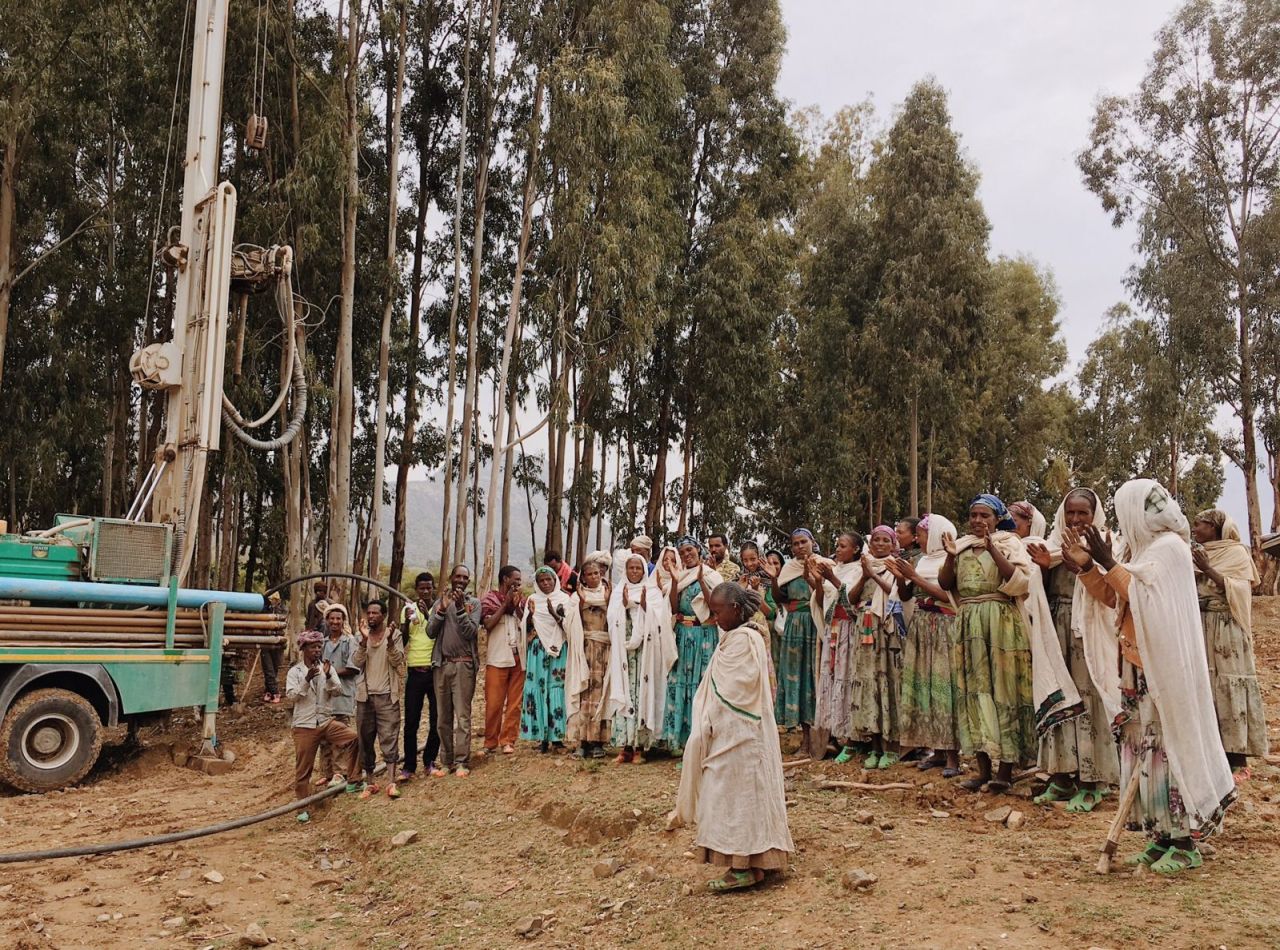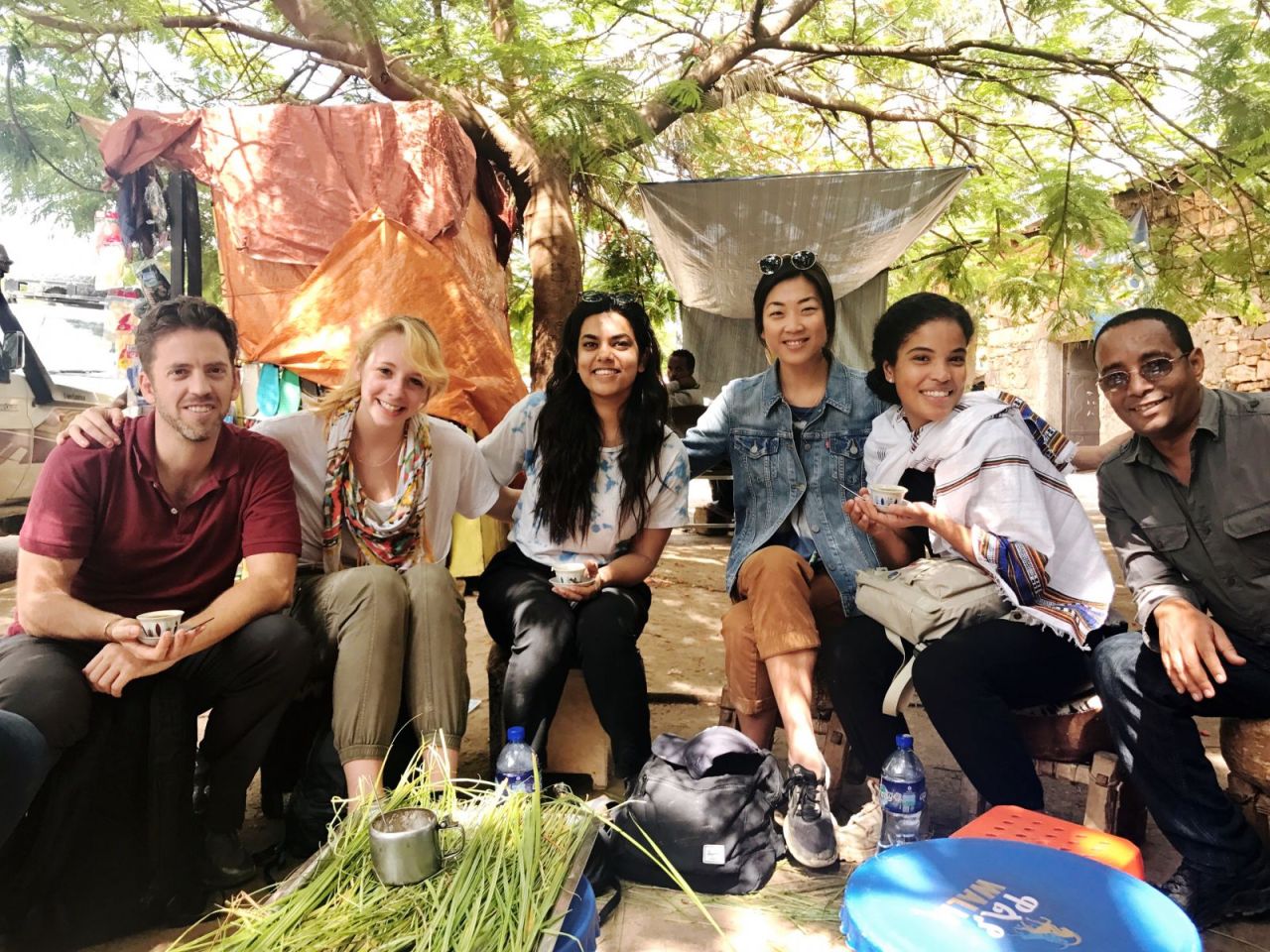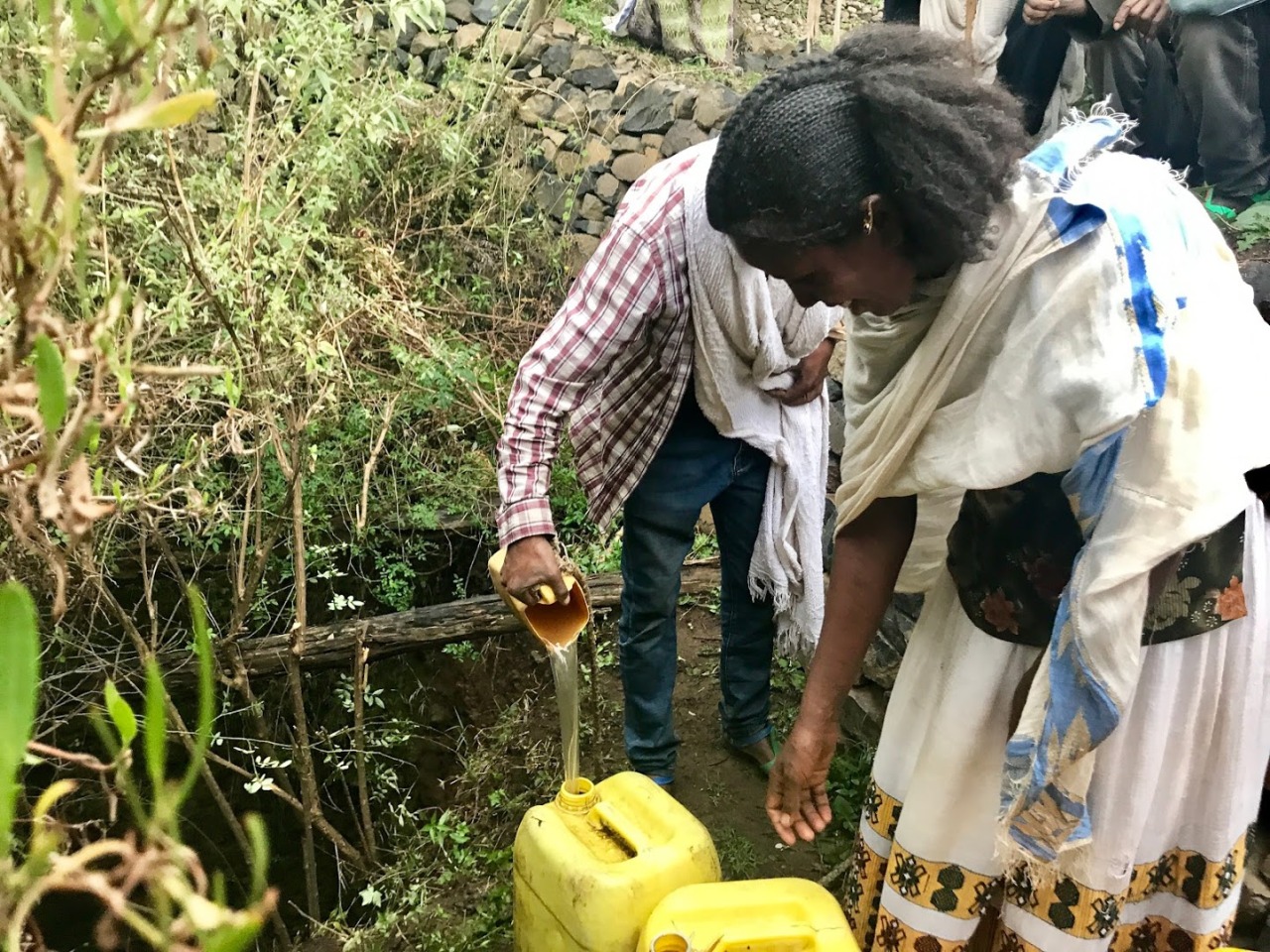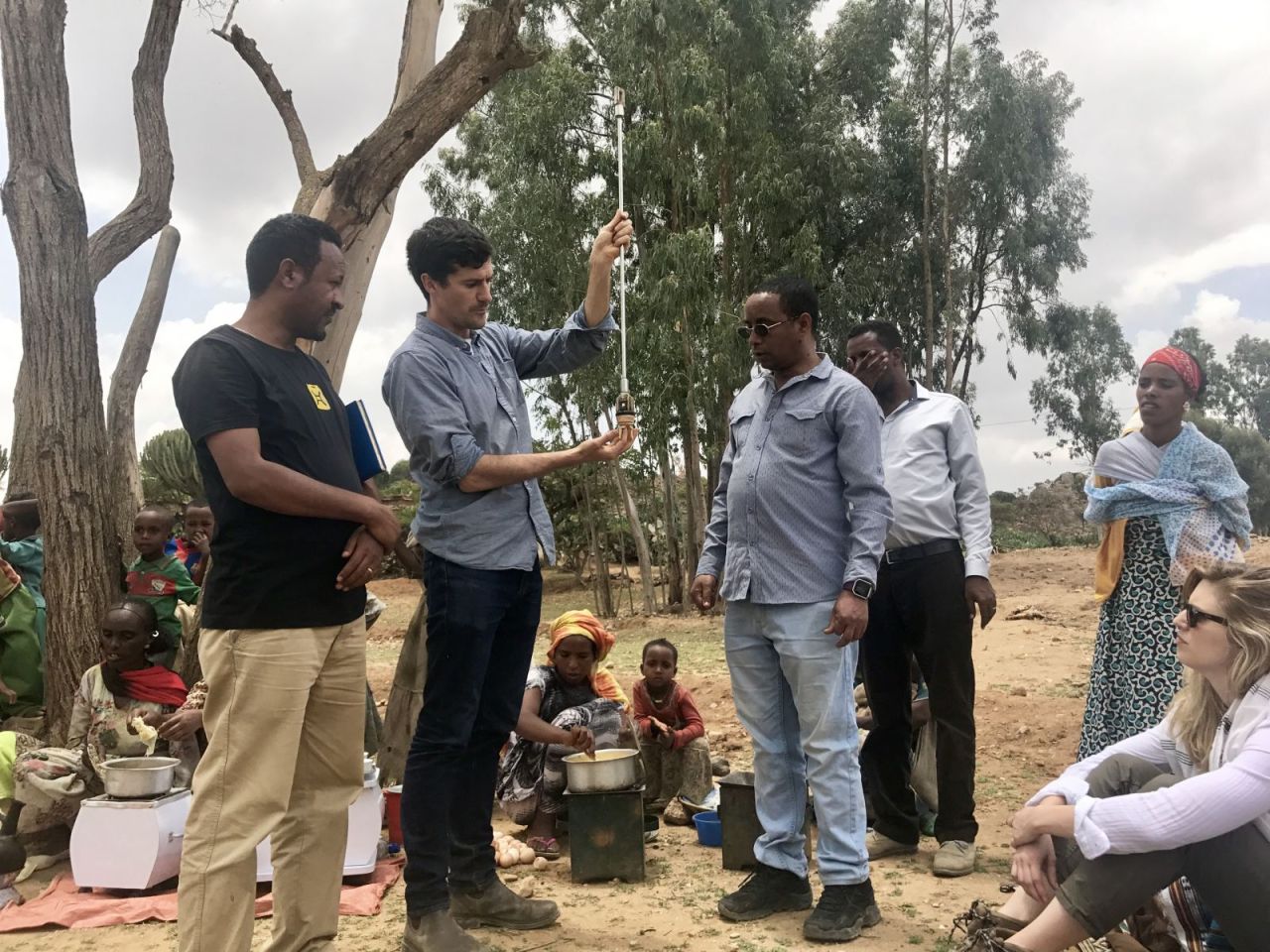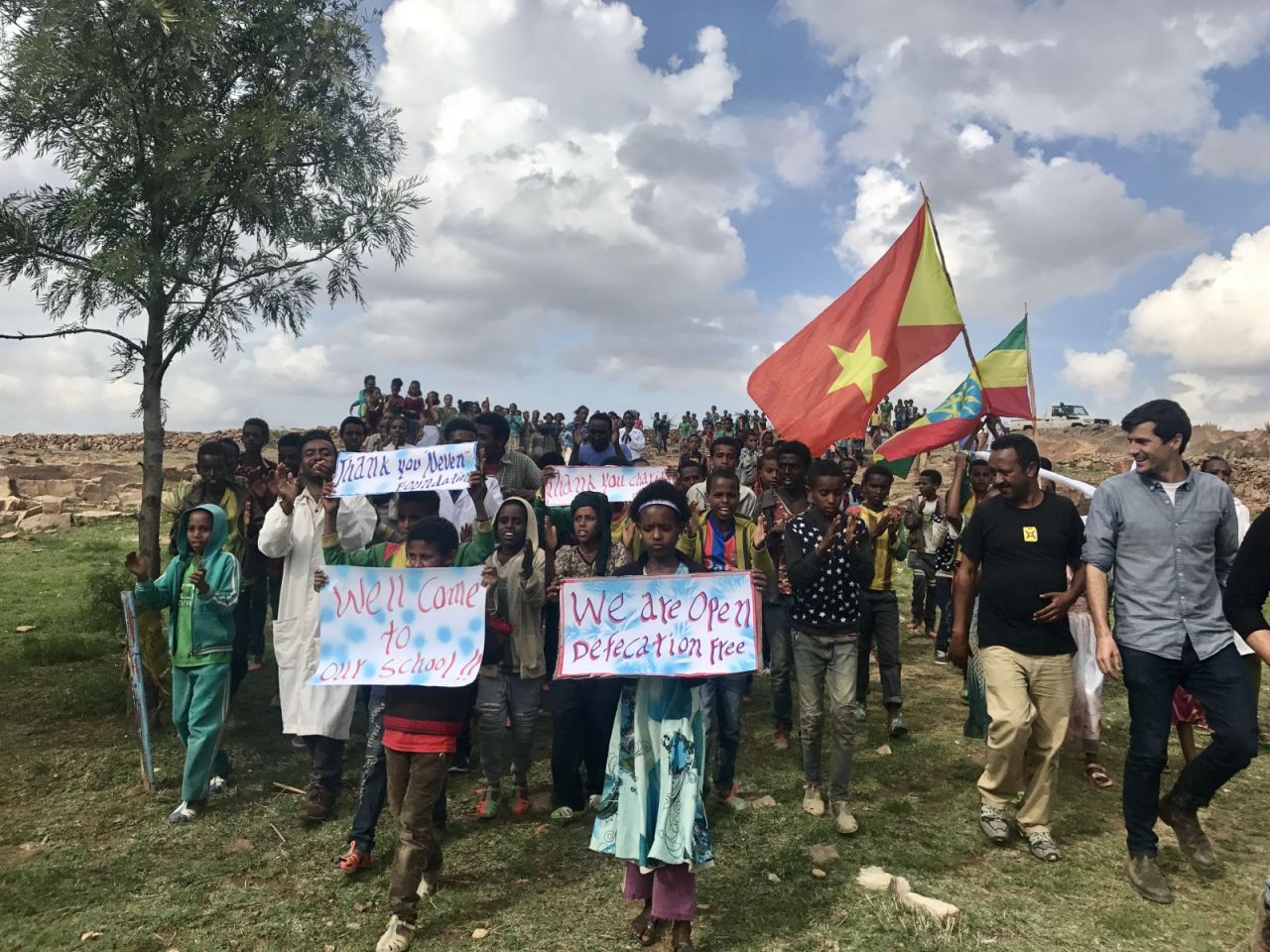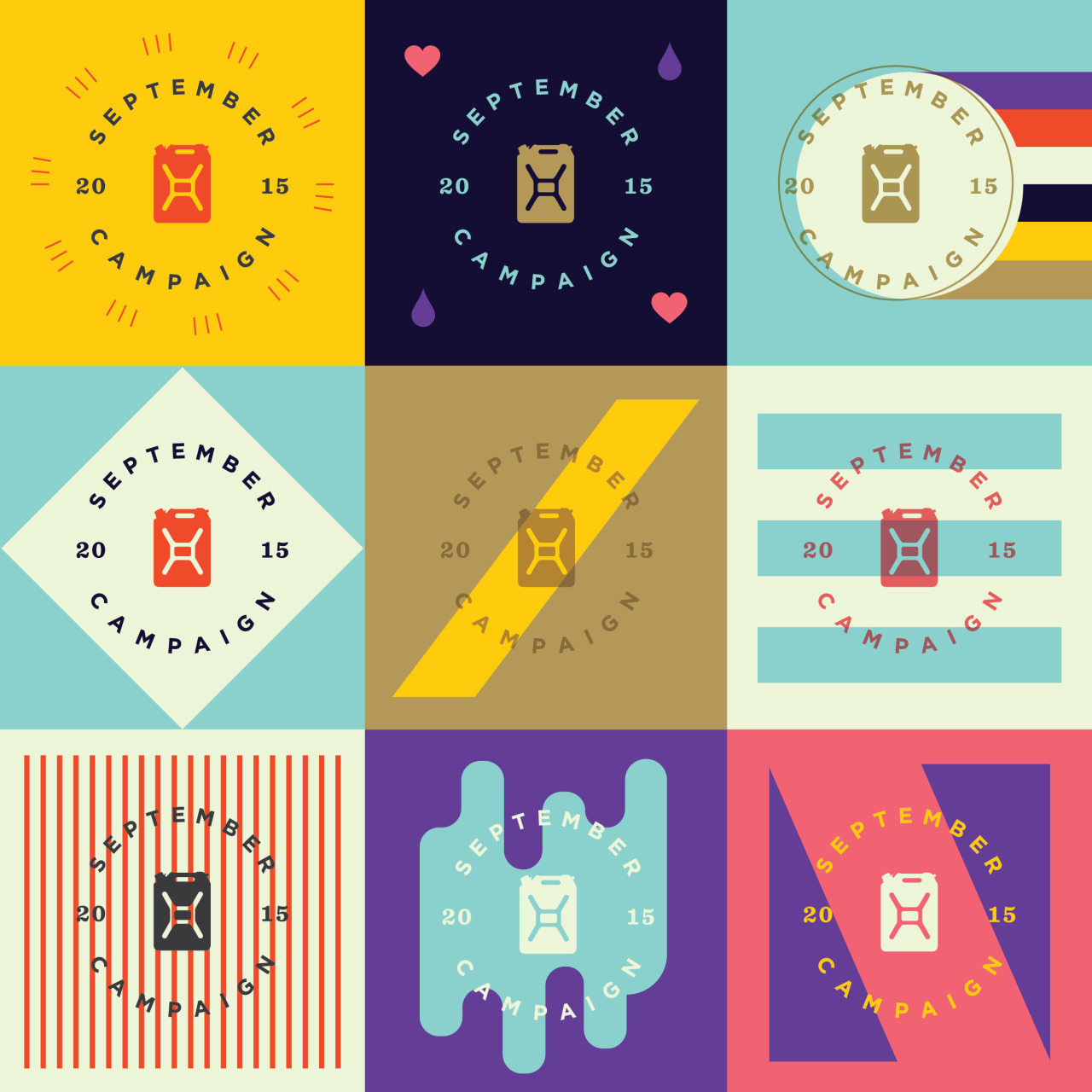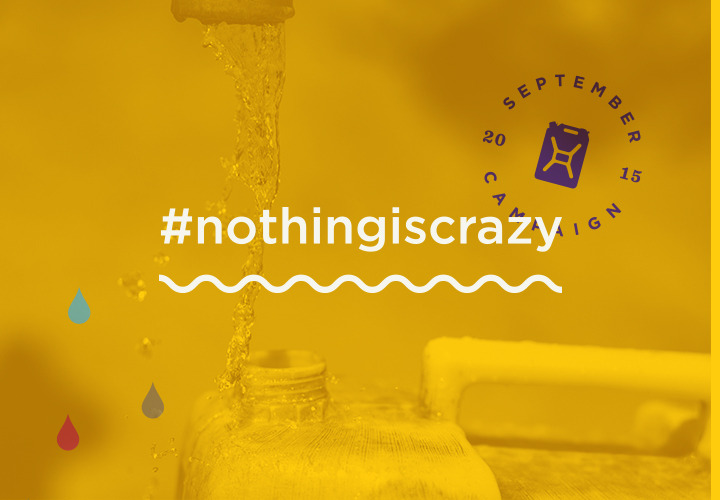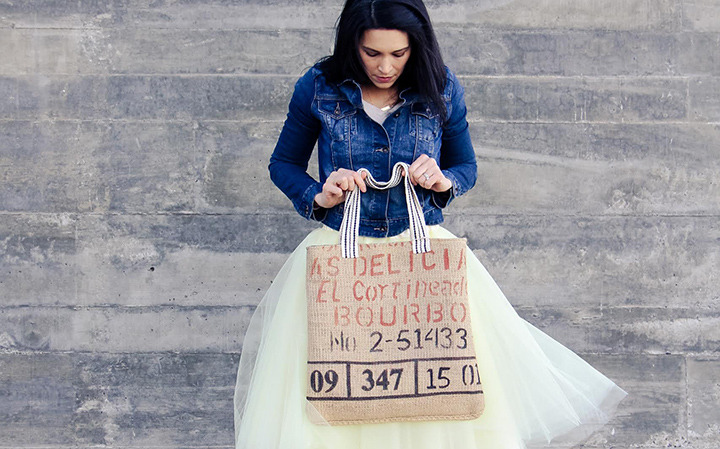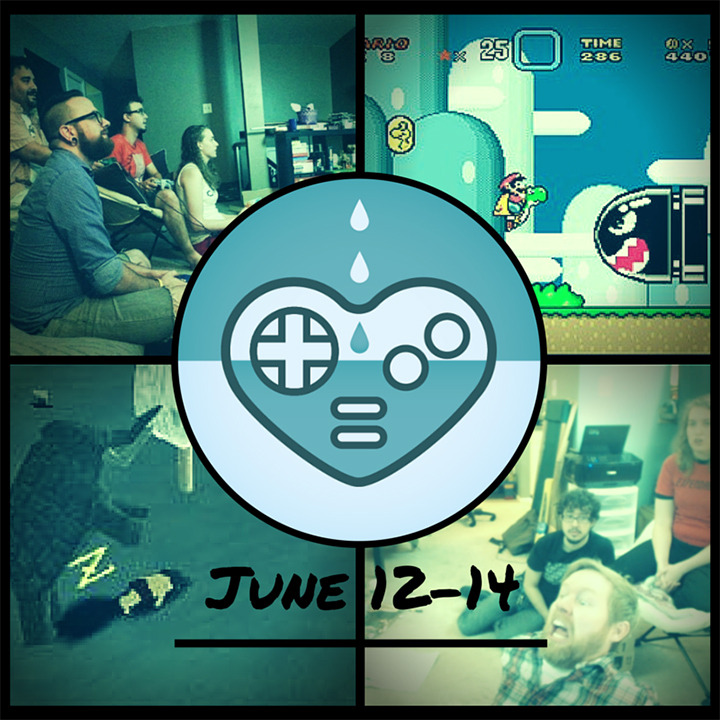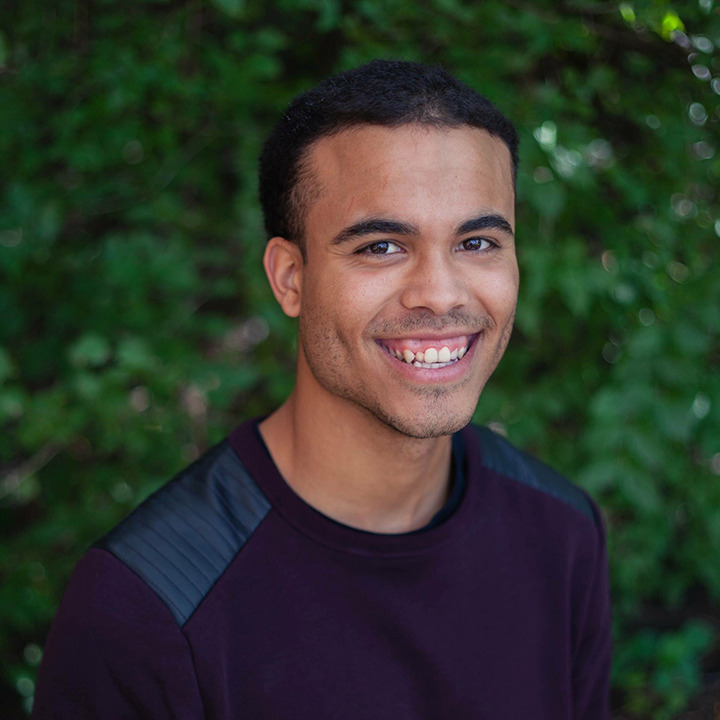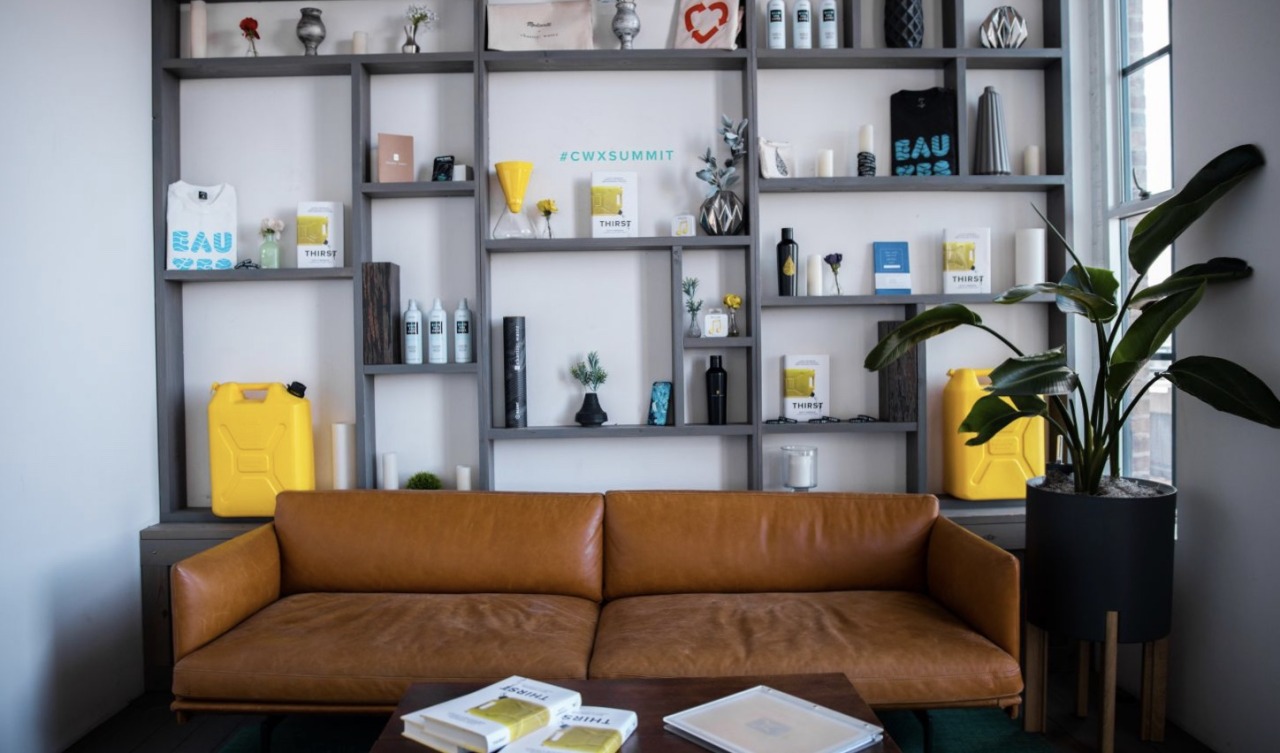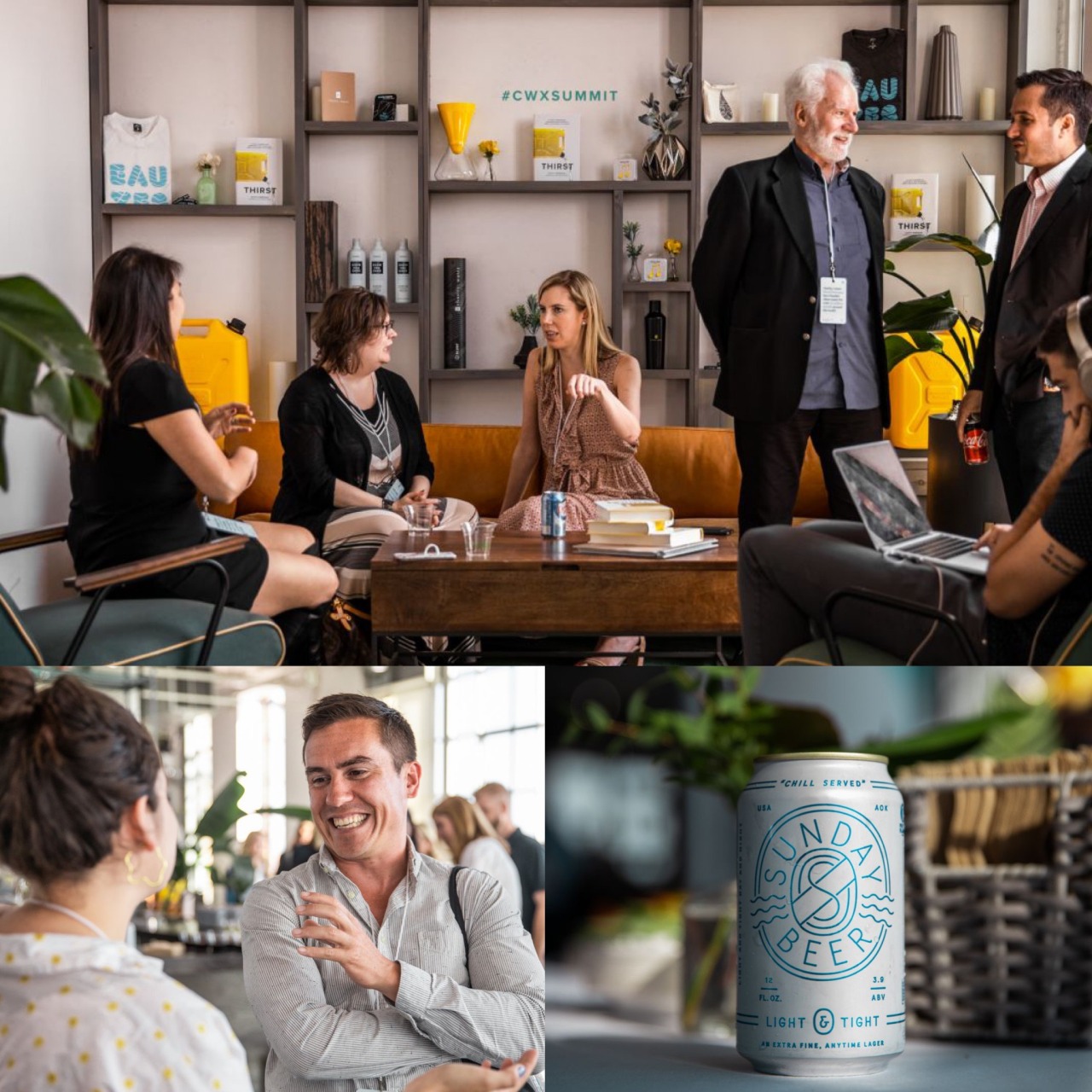Four Days in Ethiopia
The first big blizzard of 2015 hit New York the same day 22 charity: water staff members were booked on a flight out of town. JFK » DBX » ADD » MQX.
We boarded an enormous double-decker Emirates plane just as a threatened 36 inches of snow began to accumulate. But after a quick plane de-icing and a few anxious texts to loved ones, we were off on our second annual staff trip to see charity: water’s work in the field.
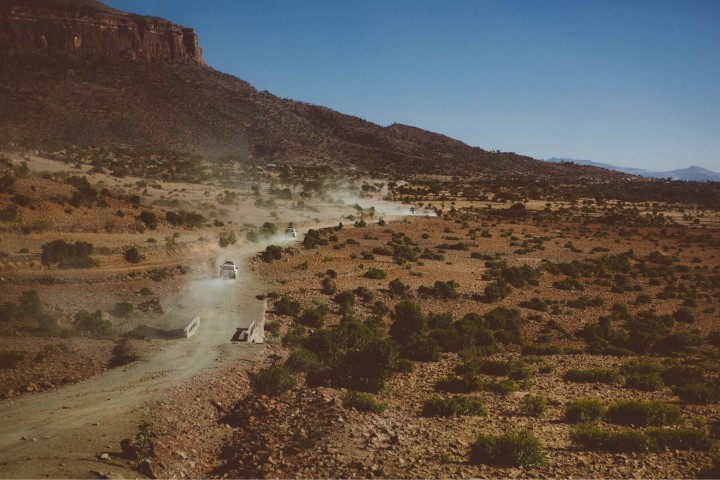
—
Wait. Let’s back up a bit.
Here at charity: water, we have about 70 staff members. Roughly half of us travel to the field often. Our Water Programs Team, for example, might clock a combined 900 hours in the air in a single year. Tyler, our Content Strategist, spent 64 days in the field in 2014, collecting stories and seeing our work in action.
But some of our jobs keep us tied to our desks. Or at least they did until 2014.
Toward the end of 2013, our Leadership Team decided every charity: water staff member should see our work first-hand. Every staff member. Every software engineer, project manager, accountant, and designer should see for themselves the difference clean water can make.
So in January 2014, we sent 30 staff members to the field for our inaugural staff trip. It went so well, we decided to repeat the adventure in 2015.
Great. Now you’re all caught up.
—
Getting to Tigray, Ethiopia, is far from easy. It took three flights, three continents, and 14,000 miles. We left New York first thing Monday morning and checked into our first hotel after dark on Tuesday. We managed to stay awake for one delicious dinner, then we collapsed into our beds.
The next four days would go by fast. They’d be exhausting. That much was already clear.
What felt like moments later, a rooster was crowing, the sun was rising, and it was time to begin our whirlwind tour of Tigray.
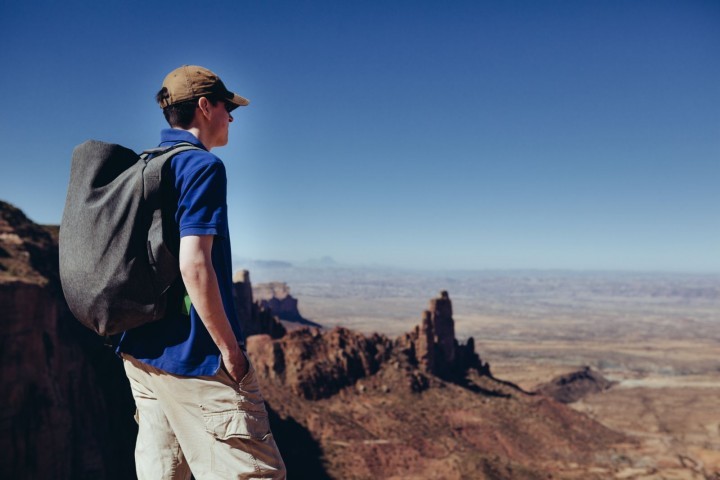
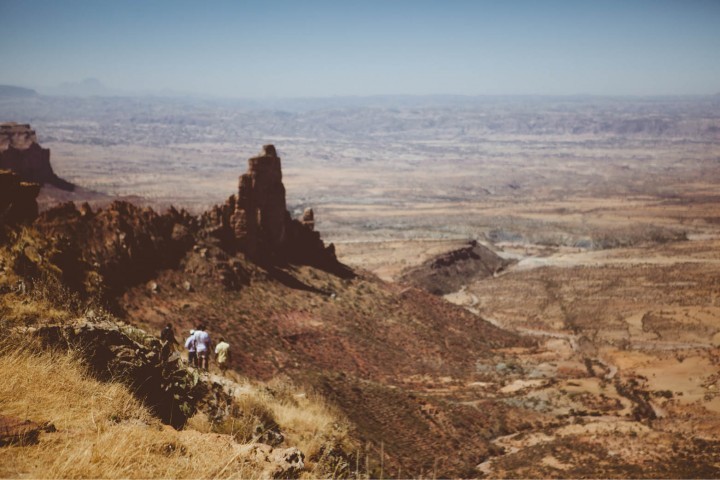
—
Day One: Shared Roads
There are two types of roads in Ethiopia: gloriously smooth paved highways, and relentlessly rocky dirt roads.
Highway or side road, we never traveled without company. Compared with standard highways in the Northeastern US, traffic was sparse. But we had eclectic company. We shared the roads with cars, trucks, horse-drawn carts, tuk-tuks, motorcycles, horses, donkeys, cows, dogs, goats, cats, camels, bicycles, sheep, men, women, tractors, children, vultures, chickens, jackals, sheep, and even a monkey (though admittedly, we only spotted one).
In cities, traffic was slower. On highways it was fast. But on any road, at any time, we might need to slow to a crawl while a seven-year-old herded her cows out of our way.

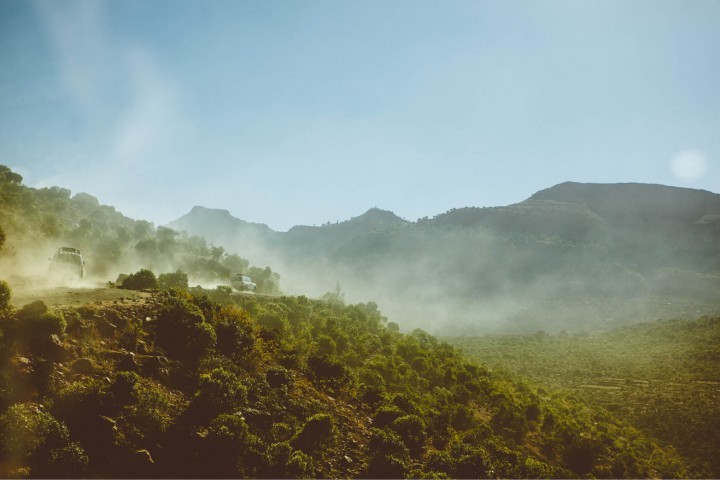
On Day One, we mostly traveled the main roads.
We arrived at our first water site as the sun dipped low and the light turned golden. We gathered in a crowd of community members, tasted the clean water from the well, met the Water Committee members, and kicked around a hand-stitched soccer ball with smiling local children. It was idyllic.
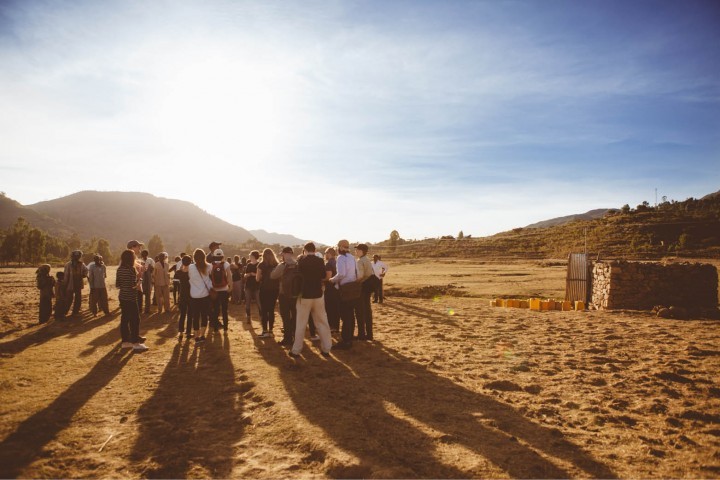
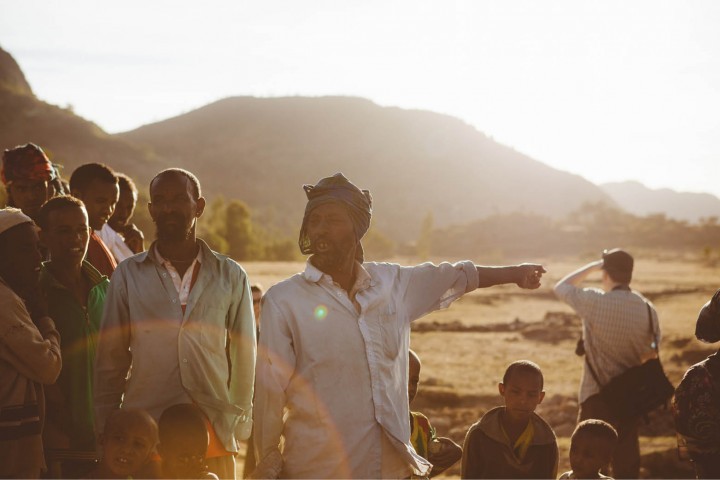
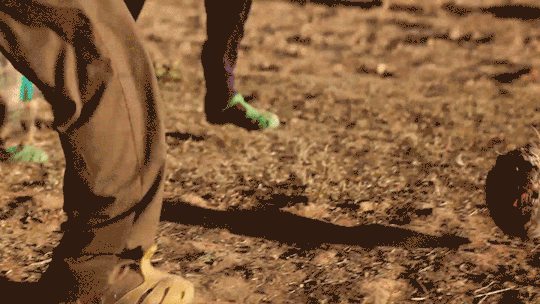

Day Two took us off the beaten path.
—
Day Two: The Warmest Greeting in the World
Fueled by strong coffee and toast, on our second morning in Ethiopia, we set off for our second site visit.
We knew this experience was going to be tough. It would also be important. To really understand the difference clean water can make, we needed to see what life is like before a well.
Our caravan trundled down steep rocky slopes, then back to the tops of hills. Our driver called the experience “An African Massage.” Every now and again, the experienced travelers in the first car would stop, hop out, and examine the road—just to make sure it was passable.


Eventually, we arrived at our site: a school at the foot of Gelila Mountain. About a dozen students, teachers, and community members crowded around our cars, welcoming us with hand-drawn signs and cheers.

After a short introduction, we followed our hosts down the hill to visit the school’s current water source. At the bottom of the ravine, we arrived at an unforgettable sight: 700 students and teachers greeting us with songs and flags and smiles. Joy was everywhere. But for some of us, it didn’t last long.
We ventured through the crowd to a scummy, murky puddle of grayish, brownish water.

This was the water source of every single cheering, smiling student around us. Half a dozen women were there, filling their Jerry Cans, with babies strapped to their backs. Donkeys were slurping their share just a few feet away. Toddlers dipped their toes in the banks. The heat was oppressive. And the smell was unforgiving.
Yes, the smell.
We tell a lot of stories about water—dirty water, clean water, and the difference water makes. But we don’t often talk about smell. Maybe that’s because scent is hard to convey in photos and words, or maybe it’s because talking about bad smells feels rude. But rudeness aside, this smell was real. It was like being on a farm. Animal feces covered the ground. Not here and there, but just about everywhere. It really made the water crisis real.
Dirty water isn’t dirty with dirt, it’s dirty with much worse. It’s dirty with feces and disease. It isn’t just a little unpleasant, it’s utterly unsafe.

Of course, we all knew that already, to some degree. But the sights and smells and sounds and heat of that day made it a whole new kind of real.
Looking around the gathered crowd, however, there were no signs of discouragement or despair. Instead, we saw joy. This visit—our visit—signaled better times ahead. Though we’d already told the community a well was in their future, we reiterated it. We promised that in the coming months, a big yellow rig would come drill for clean water, and that there’d be enough for all. Everyone cheered.
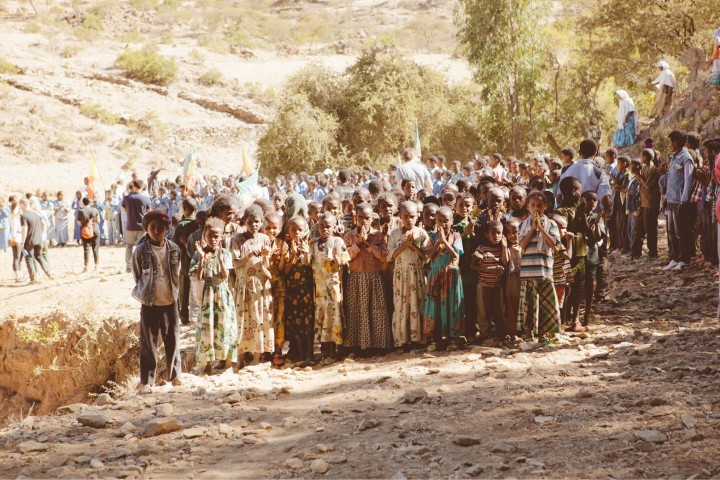
—
The terrific morning welcome seemed unbeatable. Until the afternoon. With the sun high in the sky, we went to see a school that had received a clean water project in 2013.
We heard the singing before realizing it was for us.
“Welcome Guests! We are happy, thanks to you.”
Ahead of us, a thousand children and students lined the sides of the road leading up to the school gate. A thousand people stood singing, clapping, waving flags, showering us with popcorn, and holding hand-written signs of welcome and gratitude. The experience was indescribable.


We followed the crowd onto the school grounds, where they welcomed us with food and drink and speeches. Later, we played soccer—students and teachers vs. charity: water and co. We planted trees, took photos, made friends, laughed, cheered, and drank sweet, fresh water from the school’s well.
It was unforgettable.

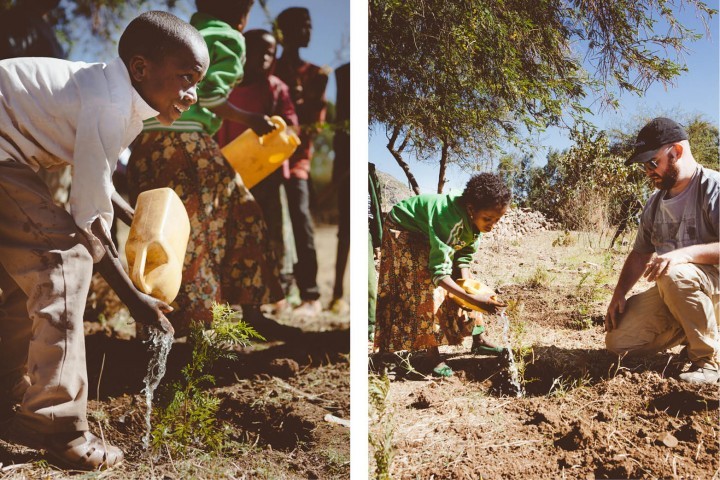
—
Day Three: Local Generosity
After the crowds of new friends we met on Day Two, Day Three was refreshingly different. Water projects weren’t on the itinerary. Instead, our day took us to visit Tigraynian people and learn about their daily lives.
A handful of farmers showed us how to thresh millet.
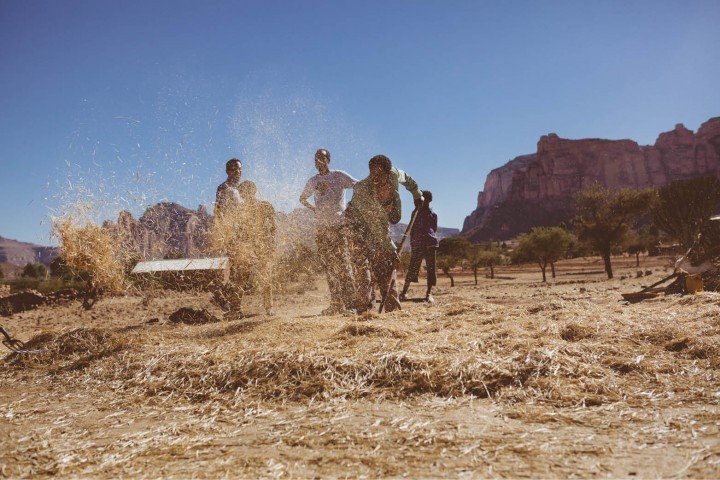
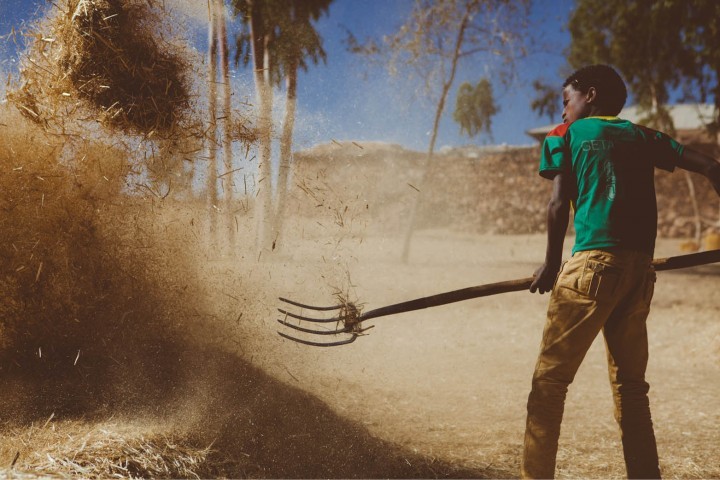
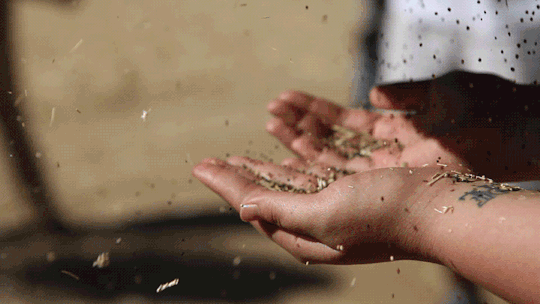

One of the best potters in Hawzien crafted a pot from hand-made clay, explaining every step and challenge of her process.
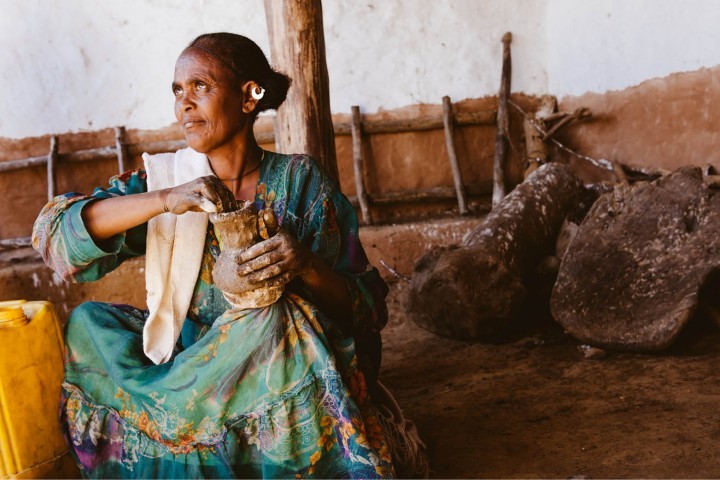


A beekeeper invited us to see famous Tigraynian honey in the making.

Local brewers treated us to suwa, a local beer-ish drink that looks like dirty water and tastes like sour vinegar. And of course, they accompanied it with a mid-afternoon feast of popcorn and bread and injera and sprouted beans doused in homemade sriracha.

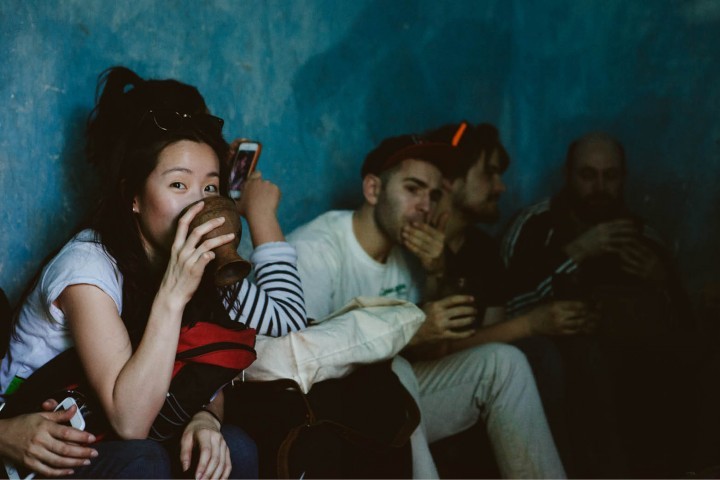
At every stop, we were welcomed with genuine warmth. People invited us into their homes, posed for our photos, and unhesitatingly shared stories, food, and drink. These incredible people—who have so little on the global scale, fairly overwhelmed us with welcome.
—
Day Four: Yellow Thunder
Our final day in the field, we left our lodge after breakfast and drove just a few miles along dusty roads. Children, as usual, crowded to greet us. Then we rounded a bend, and every single staff member caught their breath. Ahead of us, with a tremendous metal arm in the air and tires the size of boulders, Yellow Thunder was hard at work, spewing cool, clean water skyward.

Yellow Thunder is a drilling rig. A charity: water drilling rig. For most of us, he’s a legend. A few Septembers ago, we asked supporters to help us raise over $1 million to purchase this behemoth. It took 1,142 fundraising campaigns and 13,107 individual donations, but together, we did it. Since then, Yellow Thunder has been hard at work.
It wasn’t just the incredible spouting water, or the smiling crowds of children, or the talented drilling team hard at work that made this moment memorable.
All that created the scene, of course, but this moment had a power beyond that.

This moment was years in the making. Drilling this one well took many, many people—the funders behind Yellow Thunder, the campaigners and donors who supported this specific project, the amazing Programs Team here at charity: water, and the hardworking teams at our local partner, the Relief Society of Tigray. This well took planning and effort and sweat and creativity and problem solving and generosity and persistence.
Building a well isn’t easy. Yet, watching the drilling team flush the well until the water all ran clear, it felt incredibly simple. In this moment, there was no doubt that the years of hard work were worthwhile.
—
Our final stop before starting the long trek home was seeing a hand-dug well in progress.
We watched the local team dig, bucketful by bucketful. They even let us pull the trigger on some dynamite, blasting rock out of the bottom of the well.
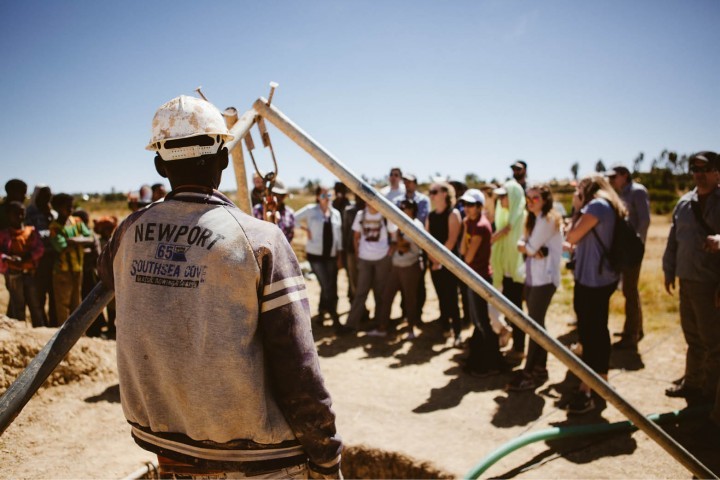

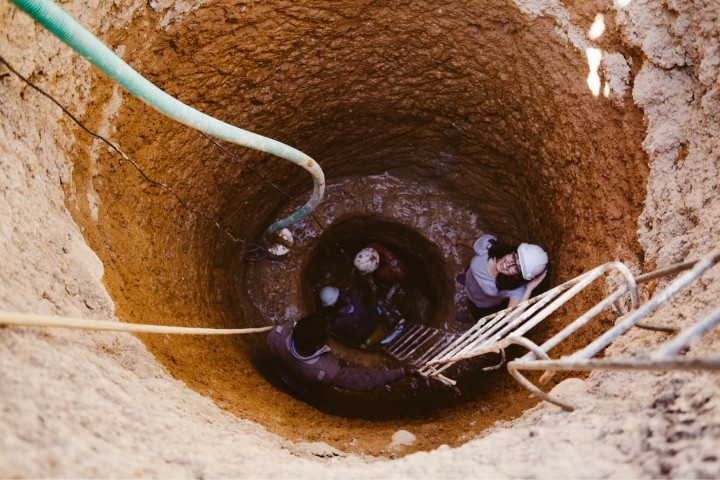

The process couldn’t have felt more different from our morning watching Yellow Thunder, but the final product will be the same—clean water for an entire community. And whether it takes an explosive few days or a laborious six weeks, the result is unquestionably transformational.
—
Flying into New York, our approach was masked in storm clouds. Icy rain pelted the windows. We landed roughly, but alive. Fitting, somehow, that our exotic, sun-drenched adventure was bookended with snow.
As a yellow cab slushed me toward Manhattan, I thought about why this trip mattered. Why do we believe that sending a software developer, or an accountant, or a project manager to Ethiopia will help them do their jobs better? If photos and videos and stories successfully inspire our supporters, why do we feel our staff needs something more?
Rather than speaking for all 22 staff members who undertook this adventure, I’ll just speak for myself.
For me, understanding the water crisis is like learning a new language. Can I learn French in a classroom in New York, surrounded by English-speakers? Yes. Many people do. But that experience is nothing like learning French while living in Paris.
Seeing our work first hand—meeting real people living without clean water, and people whose lives have been changed by it—let me understand the water crisis in context. It gave me more than vocabulary and rules to write by; it gave me first-hand cultural awareness.
I can’t pinpoint certain words or phrases that are clearer now that I’ve seen the water crisis with my own eyes, but I can say that my understanding is fuller. My intuition has been honed. And next time someone asks why I work at charity: water, my answer will be more personal, more informed, and much more real.



